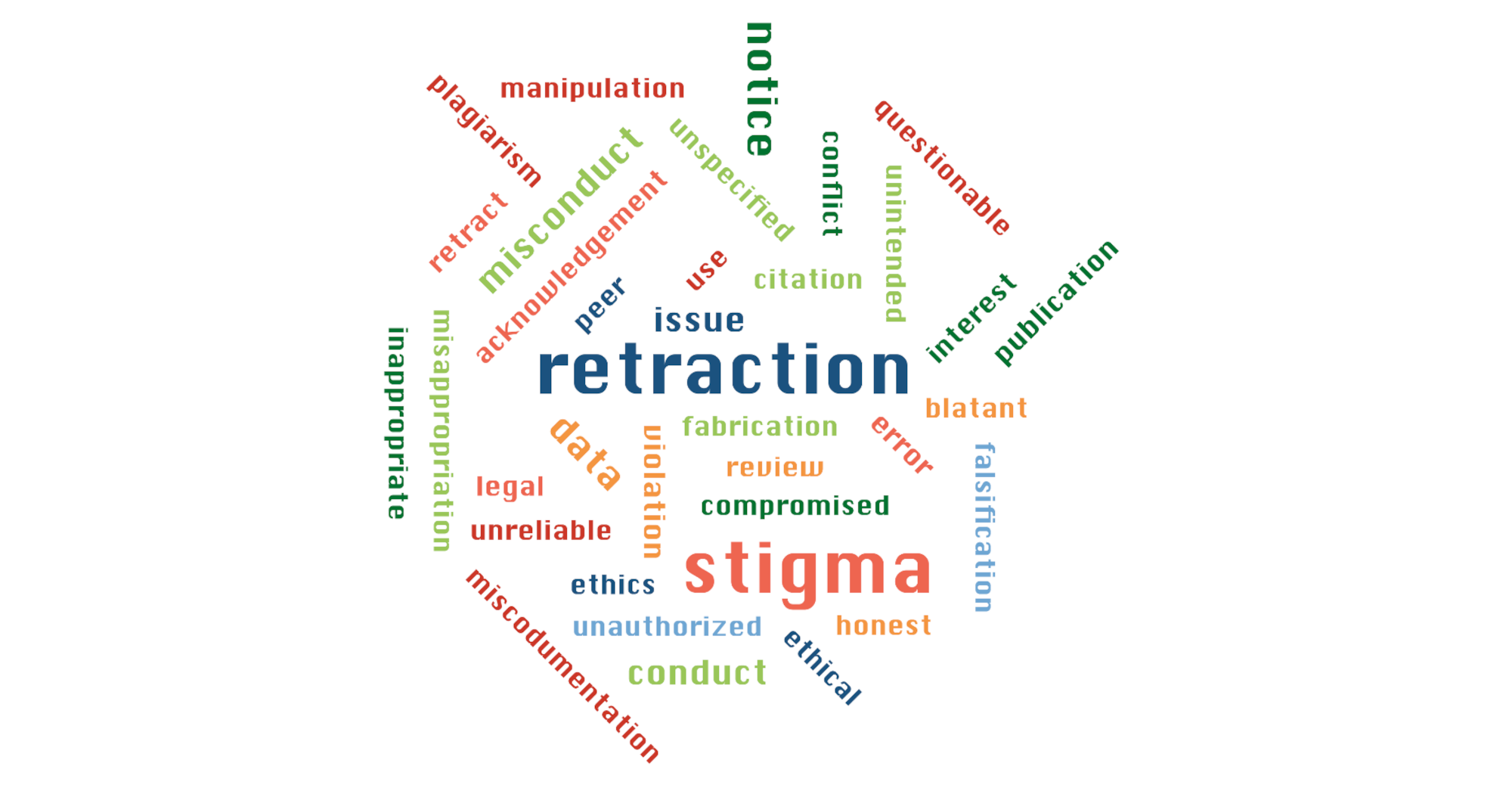Communicating Retraction Stigma via Retraction Notices
Cover Story

Research retraction functions as a mechanism for correcting the scientific literature and operates mainly through retraction notices issued to alert the academic community to scientifically problematic and/or ethically flawed publications. As such, retraction notices have become a high-stakes academic genre that inflicts various negative consequences, including stigma, on researchers accountable for retraction. Little scholarly attention, however, has been paid to the stigmatisation of research retraction and its communication.
To bridge this lacuna, Prof. Guangwei Hu in the Department of English and Communication, together with his PhD supervisee Shaoxiong Xu, have made a theoretical advance by proposing retraction stigma as a conceptual framework for investigating retraction from sociological, linguistic, and psychological perspectives. They conceptualise retraction stigma as a discrediting evaluation of the professional competence and academic ethics of researchers held accountable for retraction. Drawing on stigma theories and retraction research, they have identified seven core dimensions of retraction stigma (i.e., concealability, course, disruptiveness, aesthetics, origin, peril, and collectivity), analysed its functional justifications at both social and psychological levels, and distinguished three groups of retraction stakeholders (see Figure 1).
 Figure 1. Three concentric circles of retraction stakeholders
Figure 1. Three concentric circles of retraction stakeholders
Their model of retraction stigma communication (see
Figure 2) highlights the pivotal role of retraction notices in communicating retraction stigma. It posits that rhetorical and linguistic resources are used strategically in retraction notices to intensify or mitigate the stigmatising force of retraction notices, depending on the prioritised communicative purposes of retraction notice authors. This assumption has been empirically confirmed by their analysis of 1,000 retraction notices, which identified three types of rhetorical strategy for constructing retraction stigma (i.e.,
creating marks, assigning responsibility, and
exposing peril) and another four for managing retraction stigma (i.e.,
concealing stigma visibility, refraining from labelling, manipulating responsibility assignment, and
offering correction and remediation).
 Figure 2. A model of retraction stigma communication (RSC)
Figure 2. A model of retraction stigma communication (RSC)
Their model further assumes that when issuing retraction notices journal authorities (i.e., editors and publishers) and authors of retracted publications may differ in their communication of retraction stigma by using rhetorical strategies and linguistics resources differently for various reasons. Some of these reasons are summarized in Table 1. It is further hypothesised that the (perceived) stigmatising force of retraction notices may be influenced by the severity of retraction reasons, individuals’ proximity to retraction, and their attitudes to retraction. An ongoing project testing some of these hypotheses with a corpus of over 3,000 retraction notices has yielded confirmatory evidence.
 Note.
Note. JAs = journal authorities; IAs = innocent authors of retracted publications; GAs = guilty authors of retracted publications
More information about the retraction stigma research may be found at:
https://link.springer.com/article/10.1007/s11024-022-09465-w
https://link.springer.com/article/10.1007/s12144-022-03738-z
|
Key takeaways from the study
- Due to violations of research and publication norms, academic publications are usually retracted through retraction notices.
- Because of their frequent associations with misconduct, research retractions are stigmatising.
- Retraction stigma is not only constructed but also managed through a variety of rhetorical strategies in retraction notices.
- Communication of retraction stigma in retraction notices are influenced by different contextual factors, such as severity of reasons for retraction and authorship of retraction notices.
- Retraction notices are an under-researched high-stakes academic genre, and retraction stigma communication via retraction notices deserves more scholarly attention.
|




 Figure 1. Three concentric circles of retraction stakeholders
Figure 1. Three concentric circles of retraction stakeholders Figure 2. A model of retraction stigma communication (RSC)
Figure 2. A model of retraction stigma communication (RSC) Note. JAs = journal authorities; IAs = innocent authors of retracted publications; GAs = guilty authors of retracted publications
Note. JAs = journal authorities; IAs = innocent authors of retracted publications; GAs = guilty authors of retracted publications